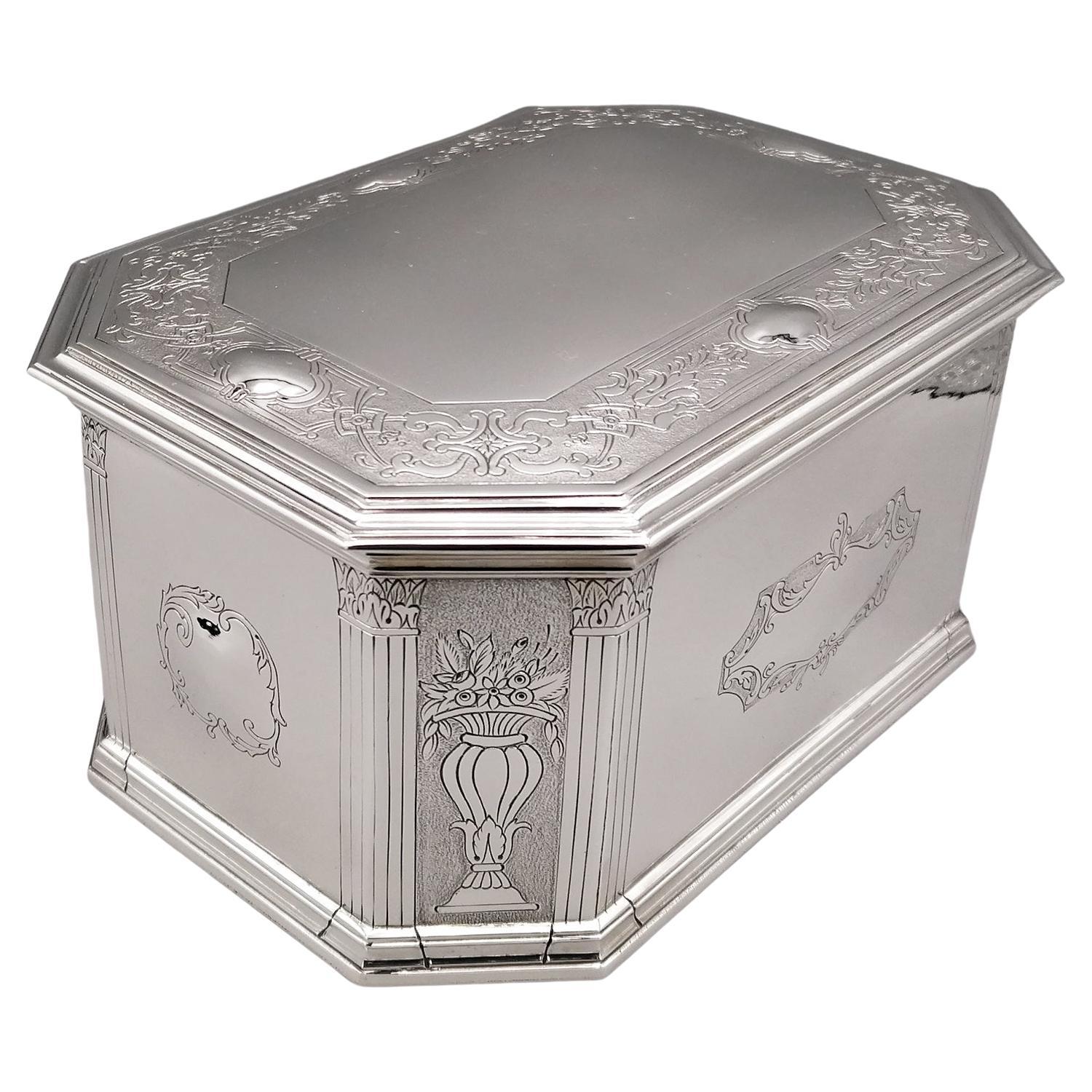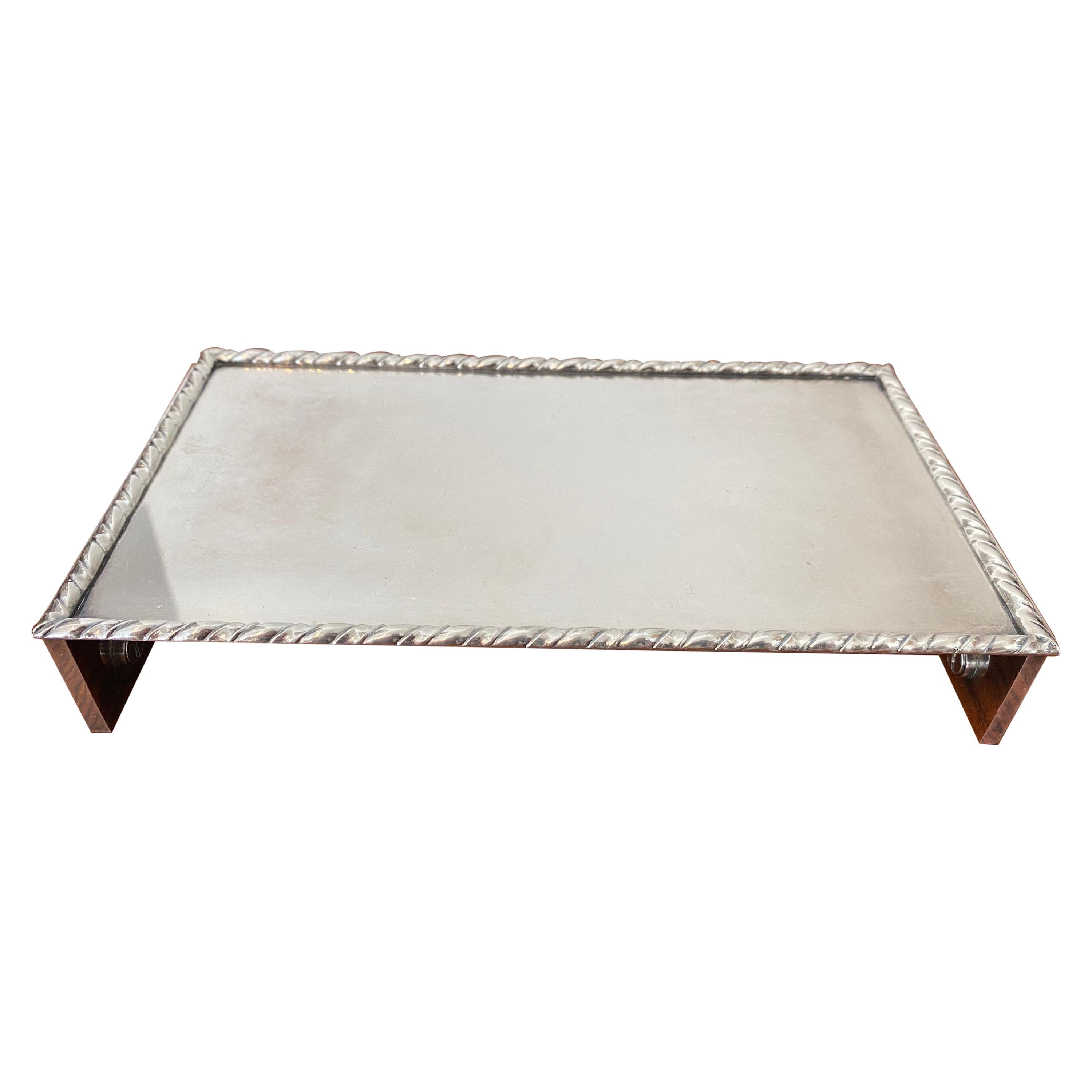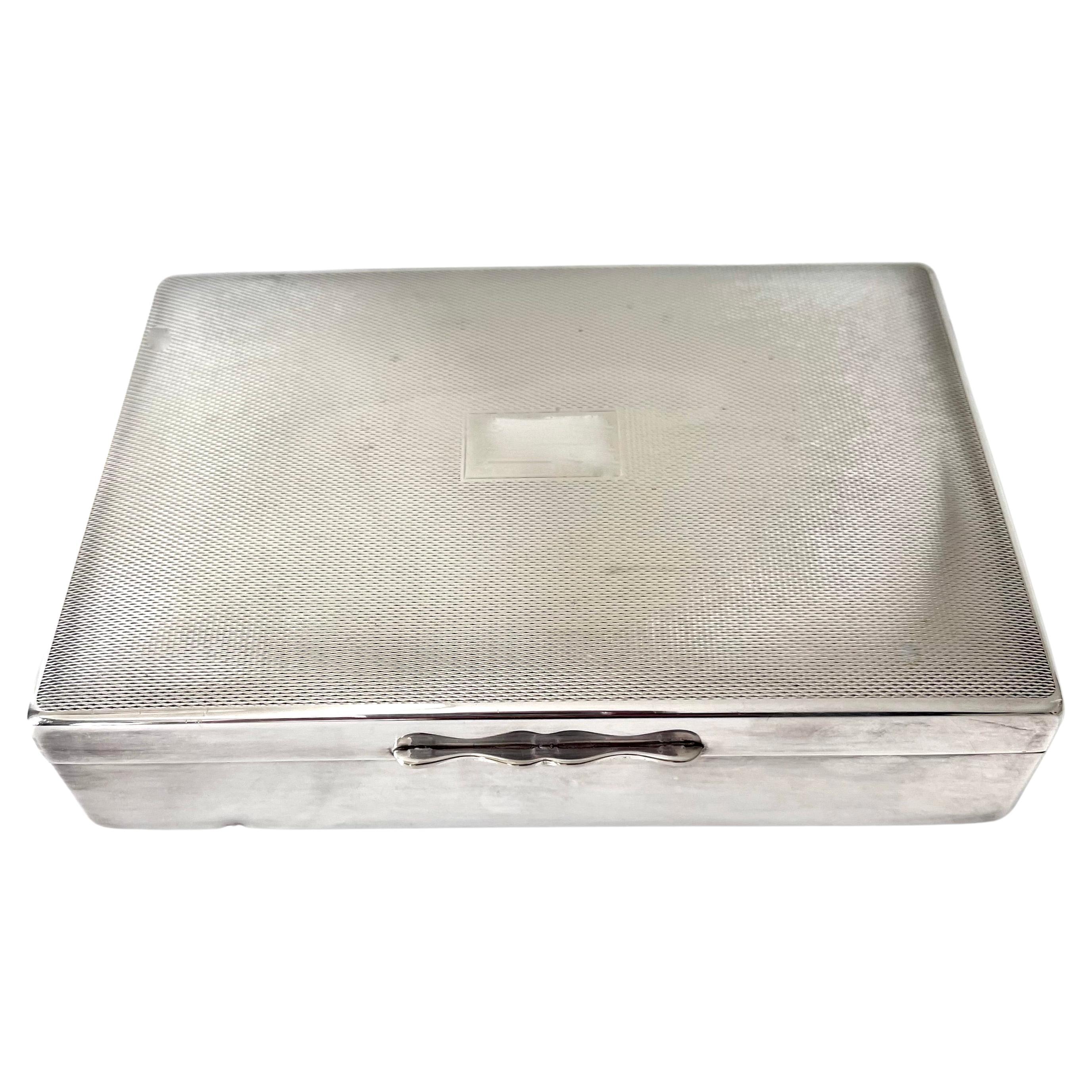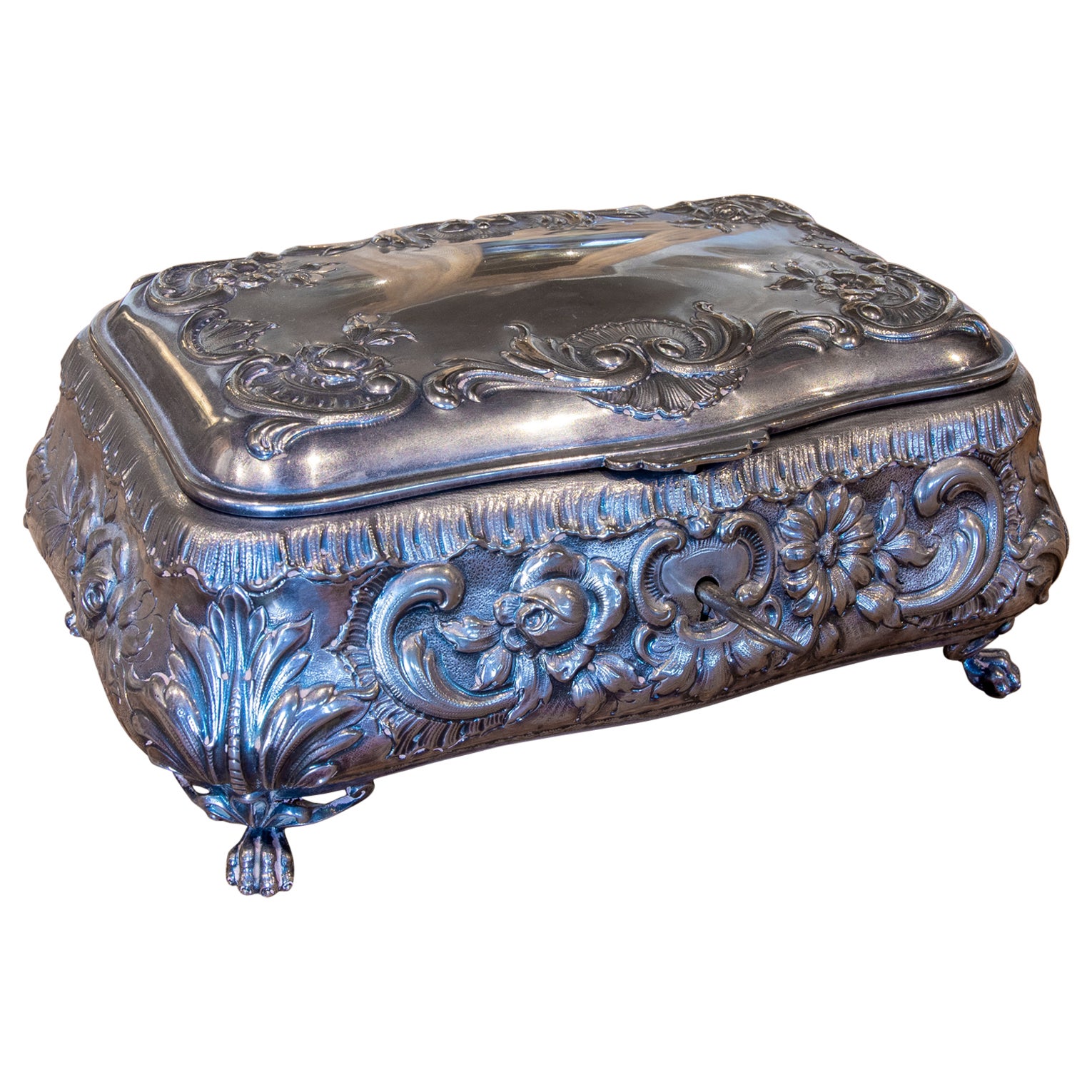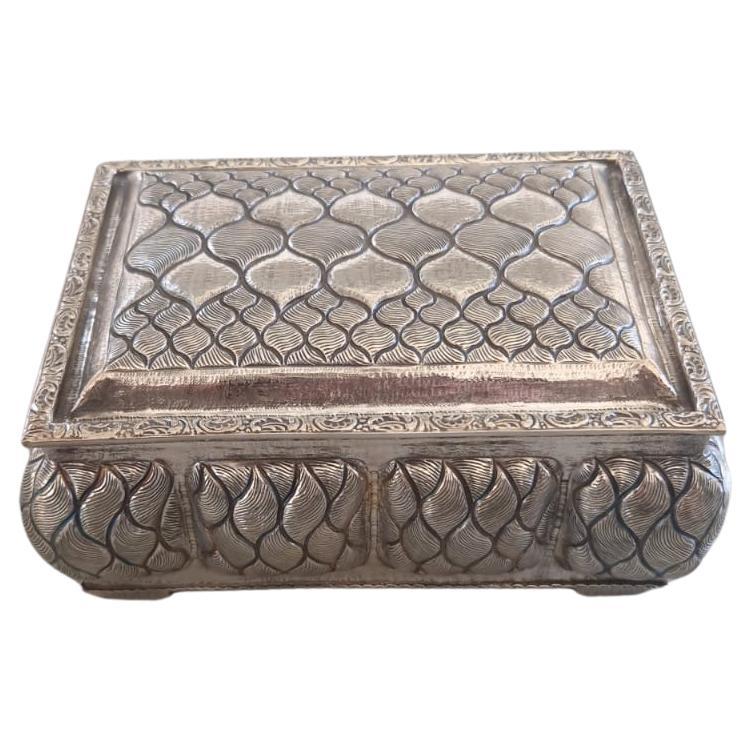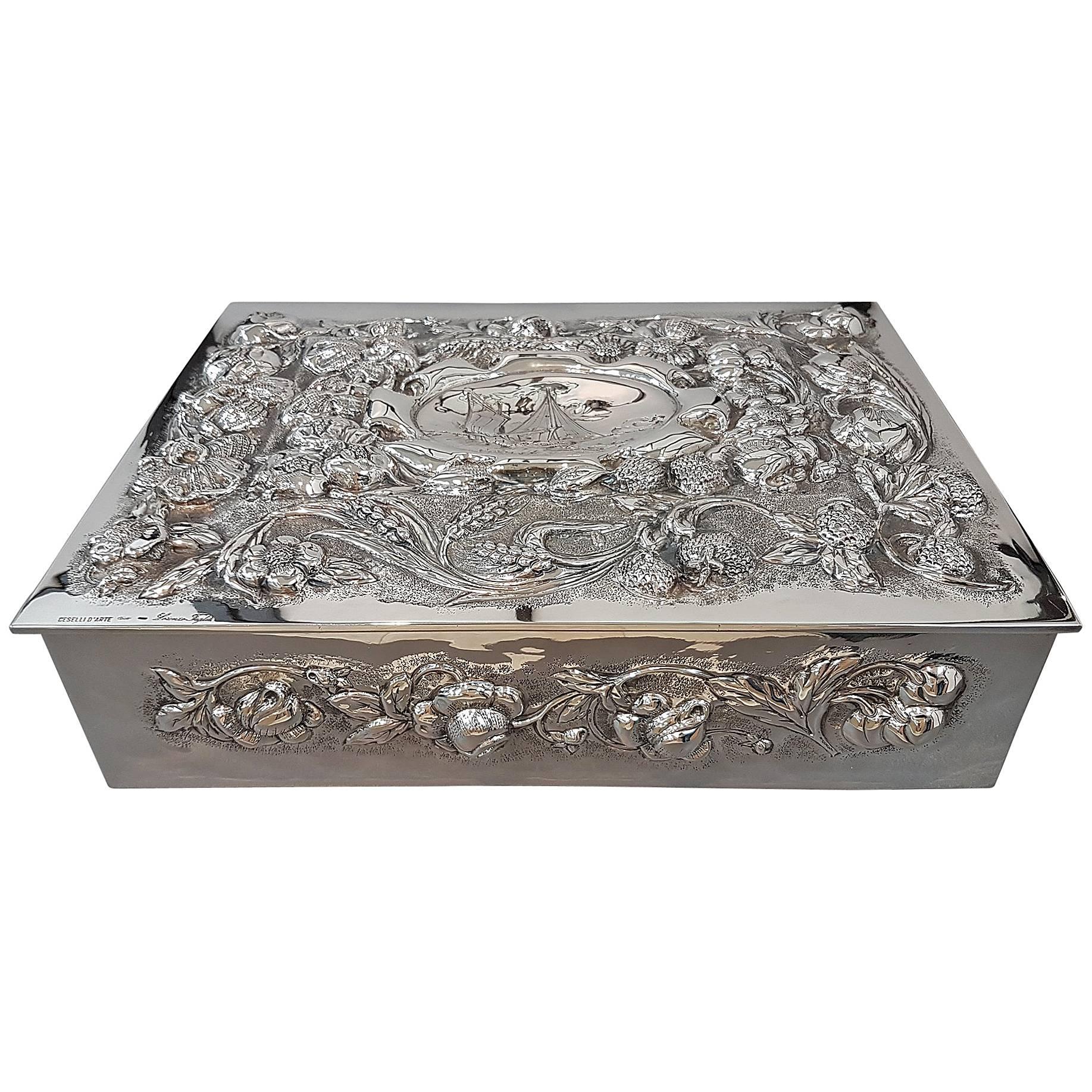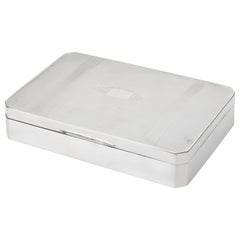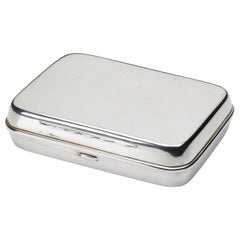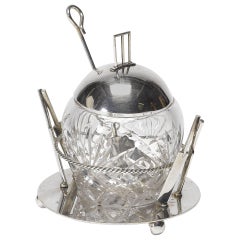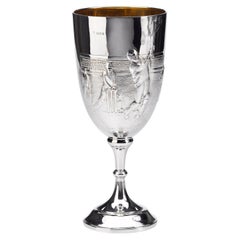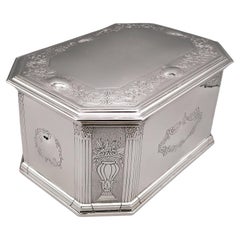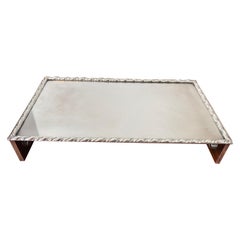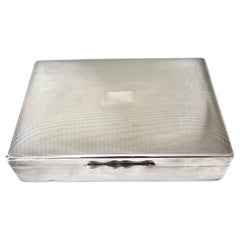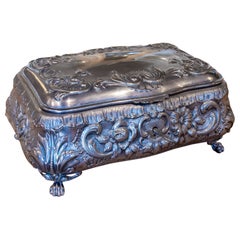Items Similar to Silver Plated Keepsake Box, Early 20th Century
Want more images or videos?
Request additional images or videos from the seller
1 of 11
Silver Plated Keepsake Box, Early 20th Century
$450
£339.60
€388.79
CA$634.65
A$696.77
CHF 363.50
MX$8,431.83
NOK 4,555.96
SEK 4,292.91
DKK 2,902.24
About the Item
Offered is a silver plated keepsake box, dating to the early 1900s. The hallmarked box offers great storage solution for jewelry, cufflinks, and other keepsakes, with a divided interior. A well maintained, elegant piece, this antique silver box is an excellent addition to any silver collection.
Trinket or keepsake boxes have taken on many forms since their first conception in ancient times. However their purpose remains the same; to store jewelry and other items precious to the owner. Originally, these boxes were used specifically for jewelry. These were in common use as early as 5000 BC in Ancient Egypt, when the majority of Egyptians, both male and female, wore jewelry. Boxes were used to keep these gemstone encrusted items safe. In Ancient Rome, jewelry was a status symbol. Rings and brooches were utilized to represent ones status in society. Again, boxes were needed for security and storage purposes. Finding early examples of these are quite rare.
Victorian and Edwardian examples of trinket boxes are far more common. This is because owning jewellery was a luxury until the Victorian era- let alone possessing so much a box was needed to store it all. Fine jewelry and other items became available to the masses after the industrial revolution due to the reduction in production costs. This led to a demand for trinket boxes, which were much smaller than jewelry boxes and therefore better suited to the needs of the middle class who did not yet possess an abundance of jewelry.
In Victorian households, collectables and other items of interested were also stashed inside these boxes. This is why they are known as trinket or keepsake boxes, rather than just jewelry boxes, although of course jewelry was also stored in them. Trinket boxes were produced in large numbers around this time. Many were lined with colored plush or velvet or rich wood. More elaborate designs had interior divisions and trays for rings and other pieces of jewellery. It was also common to see trinket boxes so small that they could only contain one item, such as a single ring. Ornate exteriors were created to reflect the value of the trinket boxes contents.
The Edwardian era saw the introduction of new styles of trinket box. These included small circular or oblong boxes that stood on cabriole legs. These often featured lids made of tortoiseshell or other luxurious materials. In the 1900s through the 1930's more streamlined and modern Art Deco styles became popular.
CONDITION:
Overall very good condition. Hinged lid. Gentle use, some light visible wear to divided interior, but otherwise quite well maintained. Hallmarked.
Dimensions: 2" H x 6 1/2" W x 3 7/8" D.
- Dimensions:Height: 2 in (5.08 cm)Width: 6.5 in (16.51 cm)Depth: 3.88 in (9.86 cm)
- Materials and Techniques:
- Place of Origin:
- Period:1900-1909
- Date of Manufacture:1900s
- Condition:Wear consistent with age and use.
- Seller Location:Colorado Springs, CO
- Reference Number:Seller: S0801stDibs: LU909734417732
About the Seller
4.9
Vetted Professional Seller
Every seller passes strict standards for authenticity and reliability
Established in 2010
1stDibs seller since 2011
464 sales on 1stDibs
- ShippingRetrieving quote...Shipping from: Colorado Springs, CO
- Return Policy
Authenticity Guarantee
In the unlikely event there’s an issue with an item’s authenticity, contact us within 1 year for a full refund. DetailsMoney-Back Guarantee
If your item is not as described, is damaged in transit, or does not arrive, contact us within 7 days for a full refund. Details24-Hour Cancellation
You have a 24-hour grace period in which to reconsider your purchase, with no questions asked.Vetted Professional Sellers
Our world-class sellers must adhere to strict standards for service and quality, maintaining the integrity of our listings.Price-Match Guarantee
If you find that a seller listed the same item for a lower price elsewhere, we’ll match it.Trusted Global Delivery
Our best-in-class carrier network provides specialized shipping options worldwide, including custom delivery.More From This Seller
View AllHallmarked Silver Plated Keepsake Box, Sheffield, UK, circa 1900
Located in Colorado Springs, CO
Offered is a stunning silver plated keepsake box dating to 1900, with associated hallmark. This small box includes a wooden interior with two slots and a blank square on top where initials could have been engraved. A well maintained, elegant piece, this antique silver box is an excellent addition to any silver or home decor collection.
Trinket or keepsake boxes have taken on many forms since their first conception in ancient times. However their purpose remains the same; to store jewelry and other items precious to the owner. Originally, these boxes were used specifically for jewelry. These were in common use as early as 5000 BC in Ancient Egypt, when the majority of Egyptians, both male and female, wore jewelry. Boxes were used to keep these gemstone encrusted items safe. In Ancient Rome, jewelry was a status symbol. Rings and brooches were utilized to represent ones status in society. Again, boxes were needed for security and storage purposes. Finding early examples of these are quite rare.
Victorian and Edwardian examples of trinket boxes are far more common. This is because owning jewellery was a luxury until the Victorian era- let alone possessing so much a box was needed to store it all. Fine jewelry and other items became available to the masses after the industrial revolution due to the reduction in production costs. This led to a demand for trinket boxes, which were much smaller than jewelry boxes and therefore better suited to the needs of the middle class who did not yet possess an abundance of jewelry.
In Victorian households, collectables and other items of interested were also stashed inside these boxes. This is why they are known as trinket or keepsake boxes, rather than just jewelry boxes, although of course jewelry was also stored in them. Trinket boxes were produced in large numbers around this time. Many were lined with colored plush or velvet or rich wood. More elaborate designs had interior divisions and trays for rings and other pieces of jewellery. It was also common to see trinket boxes so small that they could only contain one item, such as a single ring. Ornate exteriors were created to reflect the value of the trinket boxes contents.
The Edwardian era saw the introduction of new styles of trinket box. These included small circular or oblong boxes...
Category
Antique Early 1900s English Art Deco Decorative Boxes
Materials
Silver
$600 Sale Price
20% Off
Hallmarked Silver Plated Keepsake Box, Sheffield, Uk, Circa 1900
Located in Colorado Springs, CO
Offered is a stunning Sheffield silver keepsake box dating to 1900, with associated hallmark. This small box includes a clean interior and rounded corners. The box is free of names or initials, but would have been used to house keepsakes such as jewelry or cufflinks. A well maintained, elegant piece, this antique silver box is an excellent addition to any silver collection.
Trinket or keepsake boxes have taken on many forms since their first conception in ancient times. However their purpose remains the same; to store jewelry and other items precious to the owner. Originally, these boxes were used specifically for jewelry. These were in common use as early as 5000 BC in Ancient Egypt, when the majority of Egyptians, both male and female, wore jewelry. Boxes were used to keep these gemstone encrusted items safe. In Ancient Rome, jewelry was a status symbol. Rings and brooches were utilized to represent ones status in society. Again, boxes were needed for security and storage purposes. Finding early examples of these are quite rare.
Victorian and Edwardian examples of trinket boxes are far more common. This is because owning jewellery was a luxury until the Victorian era- let alone possessing so much a box was needed to store it all. Fine jewelry and other items became available to the masses after the industrial revolution due to the reduction in production costs. This led to a demand for trinket boxes, which were much smaller than jewelry boxes and therefore better suited to the needs of the middle class who did not yet possess an abundance of jewelry.
In Victorian households, collectables and other items of interested were also stashed inside these boxes. This is why they are known as trinket or keepsake boxes, rather than just jewelry boxes, although of course jewelry was also stored in them. Trinket boxes were produced in large numbers around this time. Many were lined with colored plush or velvet or rich wood. More elaborate designs had interior divisions and trays for rings and other pieces of jewellery. It was also common to see trinket boxes so small that they could only contain one item, such as a single ring. Ornate exteriors were created to reflect the value of the trinket boxes contents.
The Edwardian era saw the introduction of new styles of trinket box. These included small circular or oblong boxes...
Category
Antique Early 1900s British Art Deco Decorative Boxes
Materials
Silver
Silver Sheffield Cricket Sugar Jar, circa 1900
Located in Colorado Springs, CO
This is an exquisite early 20th century crystal jar with a silver lid and spoon. The lid's top is fashioned after a cricket wicket. The jar sits on a round silver base with decorativ...
Category
Antique Early 19th Century British Sheffield and Silverplate
Materials
Silver
Sterling Silver Cricket Trophy, circa 1923
Located in Colorado Springs, CO
This is a handsome sterling silver trophy dating to circa 1923. Detailed in raised relief on the the goblet-shaped trophy is an energetic cricket scene. It shows a cricket batter as ...
Category
Vintage 1920s British Sports Equipment and Memorabilia
Materials
Sterling Silver
Silver Plated Airplane-Themed Tableware, circa 1910
Located in Colorado Springs, CO
This is a beautiful silver-plated egg cup and spoon set with an airplane motif, dating to the early 1910s. The set includes four matching footed egg cups. The cups sit upon the stack...
Category
Vintage 1910s English Art Deco Sheffield and Silverplate
Materials
Silver
The Holy Bible, Containing the Old and New Testaments, 1887
Located in Colorado Springs, CO
The Holy Bible, Containing the Old and New Testaments, Translated out of the Original Tongues: And with the Former Translations Diligently Compared and Revised, by His Majesty’s Spec...
Category
Antique 1880s English Late Victorian Books
Materials
Leather, Paper
You May Also Like
20th Century Italian Sterling Silver Table Box
By Pampaloni
Located in VALENZA, IT
Rectangular/octagonal table box in 925 silver.
The box was completely handmade in Florence at the end of the last century.
Engraved with floral and abstract motifs, it has been fin...
Category
1990s Italian Other Decorative Boxes
Materials
Sterling Silver
$4,624 Sale Price
20% Off
Deco Style Silver Plate Box
Located in Stockton, NJ
A deco style silver plate box. Interested riveted and heavy construction with concave base interior. Marked "Compesi".
Category
20th Century Italian Art Deco Jewelry Boxes
Materials
Silver Plate
Silver Plate French Box with Wood Interior
Located in Los Angeles, CA
A lovely silver plate textured box from Paris. A wonderful decorative piece with a wooden interior.
The box is a compliment to any cocktail table, desk ...
Category
20th Century French Mid-Century Modern Decorative Boxes
Materials
Silver Plate
1950s Wooden Box with Silver Lined 800 Thousandth Silver Frame
Located in Marbella, ES
1950s Wooden box with silver lined 800 Thousandth silver frame.
Category
Mid-20th Century Spanish Decorative Boxes
Materials
Silver
Milano Sterling Silver Treasure Box
By Ganci Argenterie
Located in Milano, IT
Milano Sterling Silver Treasure Box
Special edition of our sterling silver jewellery box collection
Made in MIlano - Italy , sterling silver one of a kind box for your treasures
The ...
Category
21st Century and Contemporary Italian Art Deco Jewelry Boxes
Materials
Sterling Silver
20th Century Italian Solid Silver Table SHIP Box embossed completely by hand
Located in VALENZA, IT
Rectangular solid silver 800°°/°°° table box.
The box is embossed by hand with flowers, leaves and fruits.
At the center of the hinged lid is embossed and engraved a sailing ship in ...
Category
Vintage 1970s Italian Other Decorative Boxes
Materials
Silver
More Ways To Browse
Velvet Box With Silver Plate
Antique Keepsake Box
Silver Trinket Boxes
Small Trinket Box
Stash Box
Jewelry Box Used
Antique Silver Plated Jewellery Box
Egyptian Bc
Silver Keepsake Box
Edwardian Silver Plate And Wood Tray
Vintage Wooden Jewelry Box
Wood Jewelry Box Inlay
Bramah Lock
Jewelry Box Marquetry
Vintage Crystal Jewelry Box
Austrian Jewellery Box
Beautiful Antique Jewellery Box
Beautiful Antique Jewelry Box
